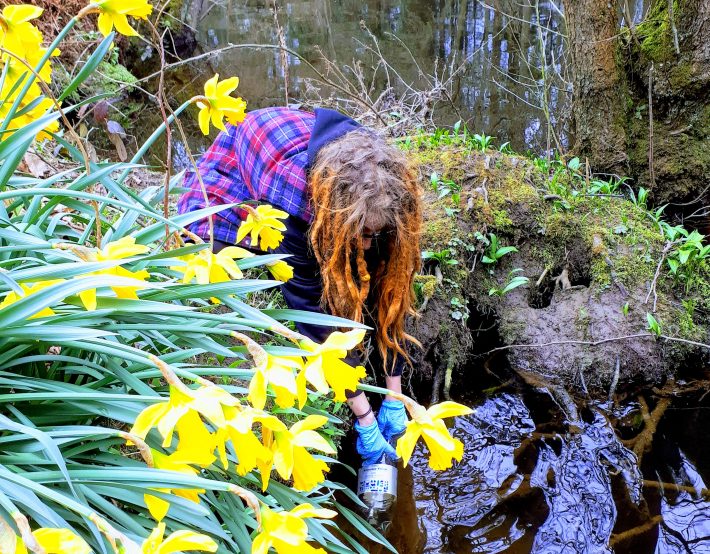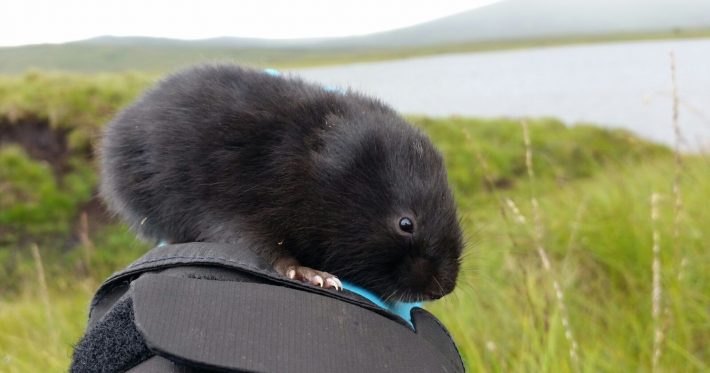Fishing for Mammals: How DNA from rivers could revolutionise mammal detection on land
University of Salford press release.
Scientists from the University of Salford have identified that DNA collected from river water is a new and effective way of monitoring the entire community of mammals on the landscape. The findings are published in the Journal of Applied Ecology.

Rivers are conveyor belts of organic material, which can include DNA shed from animals that have encountered water or that is washed into the river after rain for example. This DNA can be used to provide an immediate snapshot of the mammals present on the landscape.
This could revolutionise how we monitor mammals
– explains mammalogist Dr Allan McDevitt of the University of Salford.
“We currently use many ways of detecting and monitoring mammals, from looking for signs such as footprints or faeces, to using camera traps to take photos of them over several weeks. Now, we may just simply need to collect a few bottles of water and take it to the laboratory and look at the DNA we find.”
Providing an accurate assessment of the conservation status and distribution of mammals is vital, as many species are declining within the UK and globally. Undertaking surveys using other methods such as trapping, looking for field signs or cameras can be time-consuming and costly.
Dr McDevitt’s group have been applying the use of ‘environmental DNA’, the genetic material left behind in the water, to monitor everything from fish to amphibians. In collaboration with the Universities of Aberdeen, Massachusetts-Amherst and Hull, they are now pioneering its use for detecting endangered and elusive mammals. The group believe that using water bodies is an effective way of ‘capturing’ all the mammals present within a watershed.

To test their hypothesis, the collaborative group collected water and sediment from streams and rivers in Scotland and England. They found DNA from over 20 wild British mammals and compared these results to historical records, field signs (faecal samples from small mammals) and cameras.
Endangered UK mammals such as water voles and pine martens were detected, as well as elusive and recovering species such as otters and water shrews. Mountain hares, red deer and different species of carnivores, rodents and shrews were also regularly detected. Environmental DNA provided a similar or better performance in detecting water voles for example when compared to looking for water voles using field signs or cameras.
“We are always looking for ways to improve biodiversity assessments and monitoring, and we need to find methods which can be applied universally and cost-effectively,” says McDevitt.
“We have demonstrated that environmental DNA collected from water bodies is effective for providing us with information about the presence or absence of mammals of conservation concern. This could be used at national levels for monitoring declining or recovering populations, or the early detection of harmful invasive species.”
The team have also recently demonstrated that the method can be applied in biodiverse regions such as the Amazon and Atlantic Forests in Brazil, showing its effectiveness in different environments with different mammal communities.
You can read the article (free for a limited time) here:
, , , et al. Fishing for mammals: Landscape‐level monitoring of terrestrial and semi‐aquatic communities using eDNA from riverine systems. J Appl Ecol. 2020; 00: 1– 10. https://doi.org/10.1111/1365-2664.13592
Media contact:
Helen Jones, Senior Communications Manager, University of Salford
E: h.m.jones@salford.ac.uk
T: 0161 295 7157.
Like what we stand for?
Support our mission and help develop the next generation of ecologists by donating to the British Ecological Society.